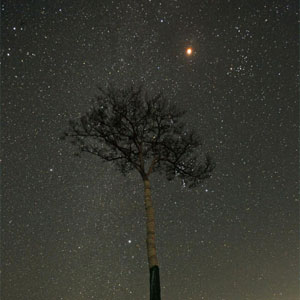
"Traditionally, the Tokugawa shogunate had used the strong, resilient, and enduring image of pine trees as the symbol of longevity and legitimacy of its rule. By repeating the same motif in different styles on the paintings that adorned the castle interiors, the shogun psychologically intimidated visitors and upheld his image as a powerful virtuous ruler.
After the 3/11 crisis, a special memorial referred to as the “miracle pine” was erected by artificially preserving a single pine tree that survived through the disaster. The miracle pine is a symbol of perseverance and hope for the people of Tohoku as they work hard to rebuild their homes. The symbolic virtues of the pine tree have survived, continued, and developed to give meaning in the modern society."
"Documentary can work as a carrier of living memories."
"...In Resnais' film Hiroshima Mon Amour, when the Japanese architect says "You saw nothing in Hiroshima. Nothing." His lover, the French actress responds, "I saw everything. Everything." This dialogue made me realize how personal and intimate, and how traumatizing a disaster can be to someone, and how difficult it is for the victim, as well as those without direct experience to approach the memory of disaster."
"To America, atomic bomb equals the iconic imagery of the mushroom cloud, but to the Hiroshima residents, atomic bomb signifies the devastation and suffering at the ground. The Hiroshima residents did not see the cloud nor understand that they were attacked by a nuclear weapon. They only saw "pika" (flash) and heard "don" (bang). However, the atomic bomb did not only create trauma for Hiroshima but also to some degree, for the pilot of the Enola Gay who had dropped the bomb. I found it interesting how a disaster can affect both sides"
"Seasons are part of the Japanese culture, which is why in order to really comprehend our research material about the Japanese we need to start off with their simple vocabulary words. All this material is meant for us to know how to go about understanding their lives, a different culture from ours."
"While I watching the interview of the author of Barefoot Gen, I was horrified by his portrayal the scenes of the victims. At first I thought it was an exaggeration; soon I realized that it was what really happened.
When talking about the a-bombing, we rarely see the images of the people in Hiroshima because they are thought to be too heavy and intense to look at. But it is only after seeing these images I feel that it would be worse if we are still trying to avoid seeing and talking about this devastating moment of history."
"Art, film, and writing are attempts to represent the way we see reality. As such, they are not free from biases and distortions."
"Class discussion brings to light just how interdisciplinary disaster and rebuilding is and should be. In Carola's class we get a "bird’s eye vie" of the layout of cities, how they're shaped, and how plans change and adapt over time, or are affected by different catalysts. On the other hand, as we do our readings for Professor Gardner’s literature class, we're put right in the center of a story, experiencing what the city was like from a citizen's personal view. Both how the city was laid out and what types of places or businesses incorporated those different areas added to how a disaster personally affected those areas. Professor Tomoko's class gives us more of an artistic viewing of these landscapes, an idea of how people illustrate and idealize landscapes, urban planning, and literature."